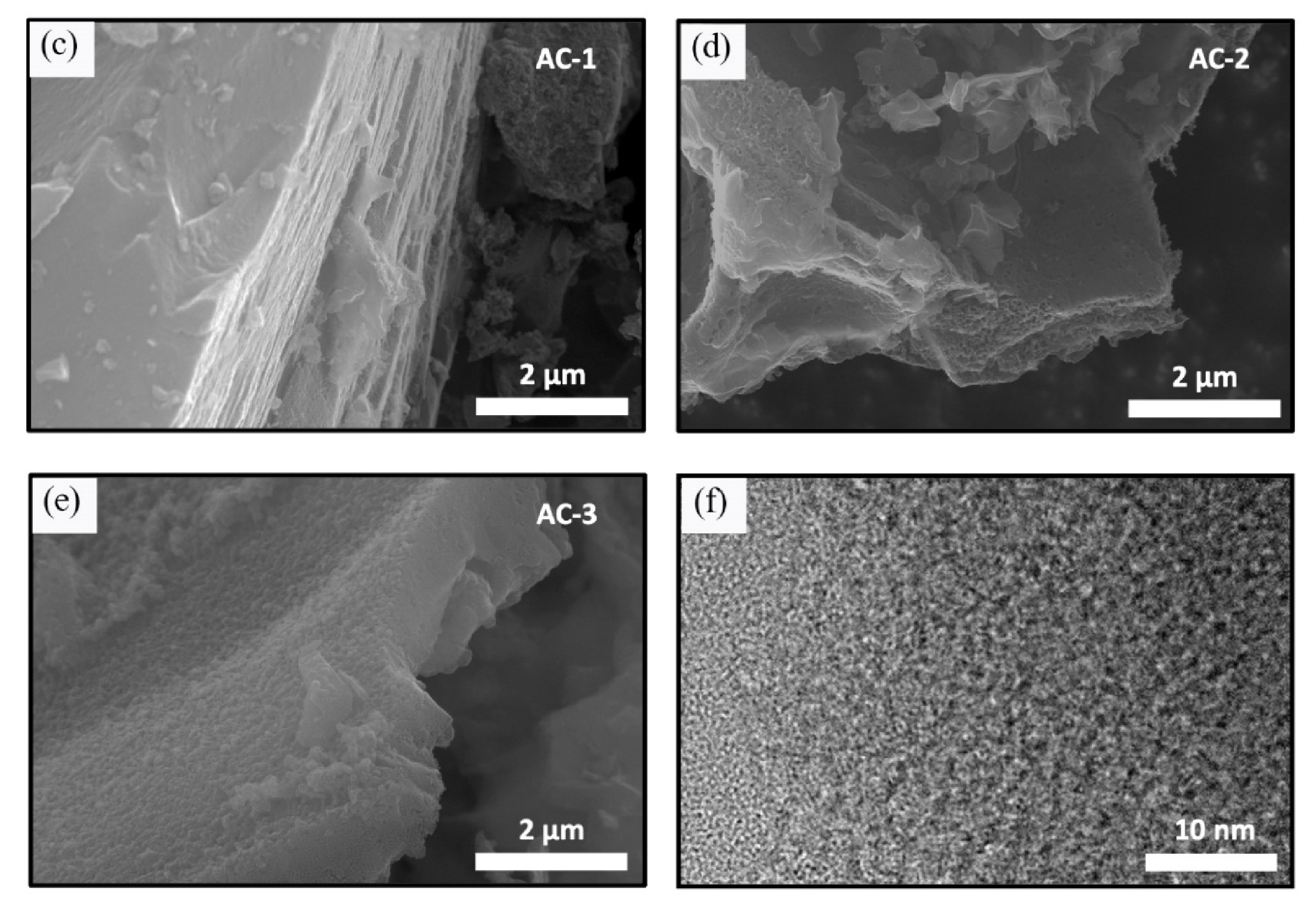Engineering Hierarchically Porous Carbon Using a Facile Process: Assessment for Green Electrodes
Abstract
Production of carbonaceous materials from waste biomass is currently gaining much attention in scientific community due to the encouragement towards a sustainable approach. However, severe pretreatment processes are still the main challenging tasks. Herein, water hyacinth (WH) is used as a precursor. Hydrothermal carbonization in acidic conditions followed by thermal activation was used for the pretreatment. A novel chemical activator CH3COOK was employed and compared to traditional chemical activators such as ZnCl2 and K2CO3. High surface areas and numerous micropores of synthesized carbons are found in ZnCl2 activation, while carbon compounds produced from K2CO3 and CH3COOK possess modest surface areas but hierarchically micro-meso-structured carbon. These findings demonstrate that the CH3COOK could serve as both a reagent for acid-assisted hydrothermal carbonization and a doped chemical for thermal activation. The use of CH3COOK is more ecologically and economically friendly, confirmed by reduced chemical usage and less produced wastewater. Furthermore, because the obtained carbons include a large number of nitrogen contents of around 2.0 wt%, these hierarchically porous carbons could enhance their performances as electrode materials in energy storage applications.
Keywords: Water hyacinth, Hydrothermal carbonization, Biomass conversion, Hierarchical porous carbon, Potassium acetate






